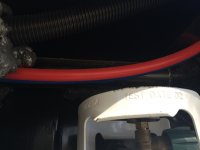vakthund
Well-known member
We are preparing for a few winter trips with the Viking Ship and I noticed that the water lines for the factory installed washer/dryer combo goes through the propane compartment which is exposed to the elements. Seem like a bad idea in zero temperature to have water lines exposed in non-heated space. Anyone else have this issue? I guess i can install a heat lamp or put heat tape on the pipes but this seems like a bad design from Heartland?


